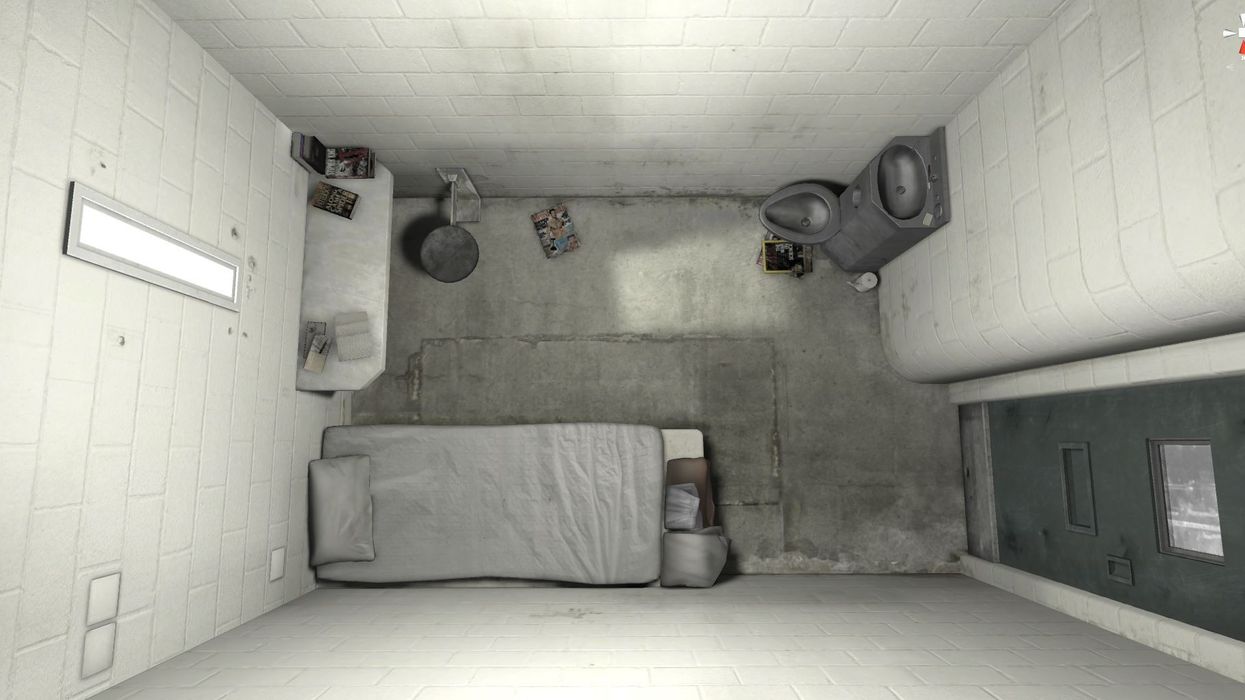'Do Things the Wrong Way': Behind the Arresting VR Film that Makes You a Prisoner
This might be the most frightening VR experience to date.

Riding a rollercoaster. Jumping off a cliff. Swinging through the jungle. These are what we’ve come to expect from virtual reality experiences. But the newly released 6x9 is just as pulse-pounding, even though you just…sit.
But, given that one of VR’s strengths is the ability to place a viewer directly into a setting, it’s where you sit that matters. In the case of 6x9, it’s in a solitary confinement prison cell.
A collaboration between The Guardian and interactive studio The Mill, 6x9 premiered at Sundance New Frontiers in January. I caught it at Tribeca’s Storyscapes, where I also chatted with co-director Francesca Panetta (The Guardian) and producer Jarrad Vladich (The Mill) about the creation of the compelling piece. [Update: the piece has been released for Google cardboard here.]
Particularly in VR, it’s important to keep the story’s purpose in mind.
[youtube https://www.youtube.com/watch?v=hwbJLlbeAS0]
Panetta and her co-director Lindsay Poulton began the process by conducting research and recording interviews with seven ex-prisoners and two psychologists. Although interviews are traditionally a journalistic tool, the directors had to think about the virtual reality end-product even during that phase.
One of the earliest decisions the team had to make was the role of the audience. In VR, the audience can be the subject of the story, or watching someone else, or both. Once the 6x9 team decided that their audience would be sitting in the project as prisoners themselves, it changed the way Panetta did her interviews.
"I asked them to talk to me as if I was in the cell," she said. "So it's very different from saying, 'Tell me who you are. Tell me about your story.' It's a fundamentally different approach [to] interviewing."
"Throughout the whole project, we were super sensitive that this needs to be done right and we need to be very respectful of the stories. "
Eventually, they created a 15-minute audio sound bed out of the interviews and brought that, along with a set of rough storyboards, to a team at The Mill that included CG artists and computer technologists.
"We talked a lot about what the cell is going to look like," Panetta explained. “Are we going to take a particular single cell and as accurately as possible replicate that? All different states have got different regulations: some have got windows, some have got two people in a cell, some have got televisions, some you're allowed some books, some you're allowed none of those things. We had to decide, from a journalistic point of view, what is an editorially accurate prototype cell?"
What does an interactive studio do with these raw materials? According to Vladich, "Then you explore. From a visual and technical perspective, we knew we had one cell space to create and there was a design process in that. Then it was understanding: how far do you push design and what's the reason behind doing this project?" Vladich suggested that, particularly in VR, it’s important to keep the story’s purpose in mind.
"We want someone to feel lonely."
For 6x9, the purpose was to have the audience briefly experience the isolation of a solitary confinement prisoner. Vladich recalled, "Throughout the whole project, we were super sensitive that this needs to be done right and we need to be very respectful of the content and stories. Ultimately, it’s seven guys telling you about their really, really fucked up experience in solitary."
In order to do so, they seated viewers in a virtual cell and interwove fragments of the journalists’ interviews with 360-degree audio of real, visceral recordings from inside prisons. They were also sure to include uncomfortable moments of silence where the viewer can get a tiny taste of the "solitary" nature of the subjects’ experience.
"We failed way more than we succeeded. Failure is part of the process.”
The Mill often works for brands that want their users to have 30 or 60-second VR engagements, but when doing a social issue story, "These experiences need time. It's about making the most of that time and just being sympathetic to what you're trying to make a person feel."
Vladich insists that the theories behind working in VR are very similar to filmmaking. You have to think about space, action, emotion, visuals, and audio. But you also need to be prepared to experiment and fail. In undertaking this project, he said, "We failed way more than we succeeded."
His advice for filmmakers working in VR? "Failure is part of the process. Do things the wrong way."
Be sure to check back for more coverage of Tribeca 2016.



 Richard Gere and Uma Thurman in 'Oh, Canada' via Kino Lorber
Richard Gere and Uma Thurman in 'Oh, Canada' via Kino Lorber  Uma Thurman in 'Oh, Canada'via Kino Lorber
Uma Thurman in 'Oh, Canada'via Kino Lorber 









